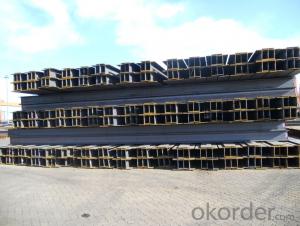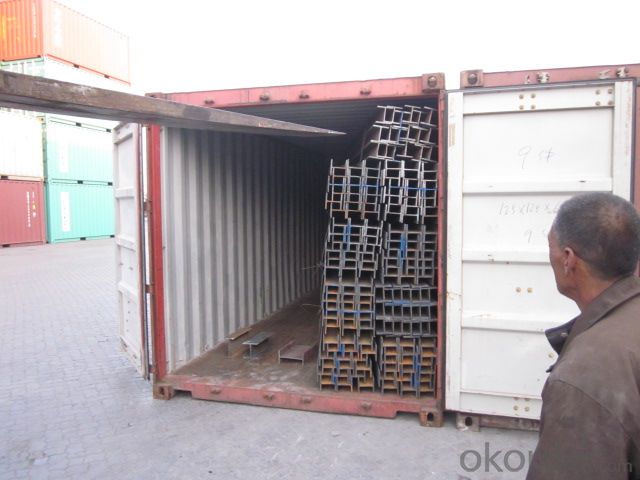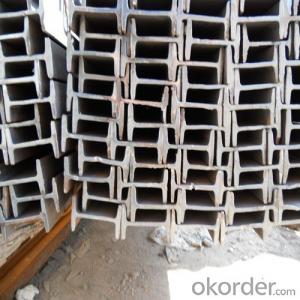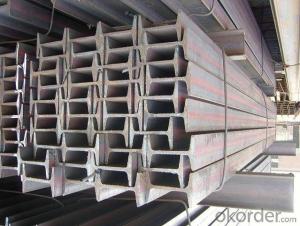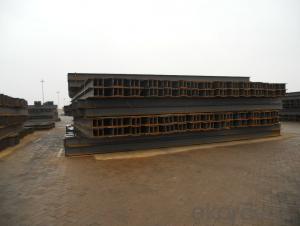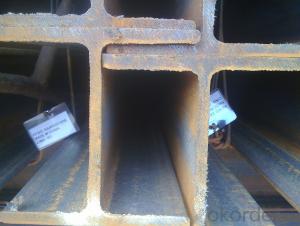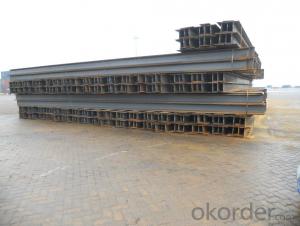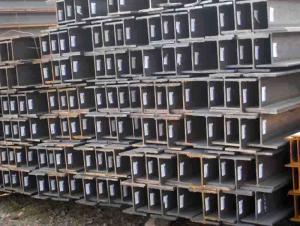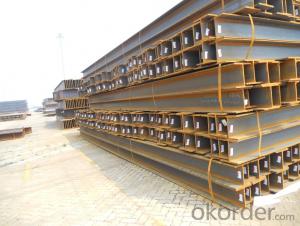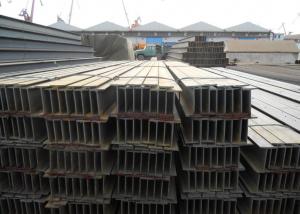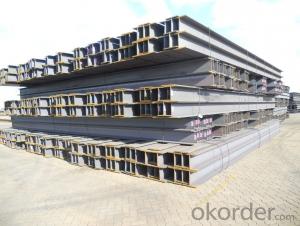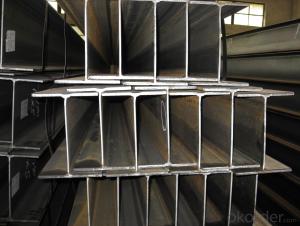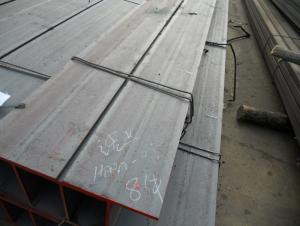Hot Rolled Steel H-Beam for Equipment Structure
- Loading Port:
- Tianjin
- Payment Terms:
- TT OR LC
- Min Order Qty:
- 10000 m.t.
- Supply Capability:
- 150000 m.t./month
OKorder Service Pledge
OKorder Financial Service
You Might Also Like
Specification
Product Description:
OKorder is offering Hot Rolled Steel H-Beam for Equipment Structure at great prices with worldwide shipping. Our supplier is a world-class manufacturer of steel, with our products utilized the world over. OKorder annually supplies products to European, North American and Asian markets. We provide quotations within 24 hours of receiving an inquiry and guarantee competitive prices.
Product Applications:
Hot Rolled Steel H-Beam for Equipment Structure are widely used in the construction of buildings and bridges, and the manufacturing, petrochemical, and transportation industries.
Product Advantages:
OKorder's Hot Rolled Steel H-Beam for Equipment Structure are durable, strong, and resist corrosion.
Main Product Features:
· Premium quality
· Prompt delivery & seaworthy packing (30 days after receiving deposit)
· Can be recycled and reused
· Mill test certification
· Competitive pricing
Product Specifications:
Specifications of Hot Rolled Steel H-Beam for Prefabrication structure
1. Standard: Q235B2.
2. Grade: Q235, SS400 or Equivalent
3. Length:as following table
4. Invoicing on theoretical weight or actual weight as customer request
5.Payment: TT or LC
6. Sizes:
SIZE(mm) | DIMENSION(kg/m) |
150*75 | 14 |
150*150 | 31.1 |
148*100 | 20.7 |
200*100 | 20.9 |
Usage & Applications of Hot Rolled Steel H-Beam for Equipment Structure
Commercial building structure ;Pre-engineered buildings; Machinery support structure; Prefabricated structure; Medium scale bridges; Ship-building structure. etc.
Packaging & Delivery
1. Packing: it is nude packed in bundles by steel wire rod
2. Bundle weight: not more than 3 MT for bulk vessel; less than 3 MT for container load
3. Marks:
Color marking: There will be color marking on both end of the bundle for the cargo delivered by bulk vessel. That makes it easily to distinguish at the destination port.
Tag mark: there will be tag mark tied up on the bundles. The information usually including supplier logo and name, product name, made in China, shipping marks and other information request by the customer.
If loading by container the marking is not needed, but we will prepare it as customer request.
4. Transportation: the goods are delivered by truck from mill to loading port, the maximum quantity can be loaded is around 40MTs by each truck. If the order quantity cannot reach the full truck loaded, the transportation cost per ton will be little higher than full load.
5. Delivered by bulk vessel or container
Production flow of Hot Rolled Steel H-Beam for Prefabrication structure
Material prepare (billet) —heat up—rough rolling—precision rolling—cooling—packing—storage and transportation
FAQ:
Q1: How do we guarantee the quality of our products?
A2: We have established an advanced quality management system which conducts strict quality tests at every step, from raw materials to the final product. At the same time, we provide extensive follow-up service assurances as required.
Images:
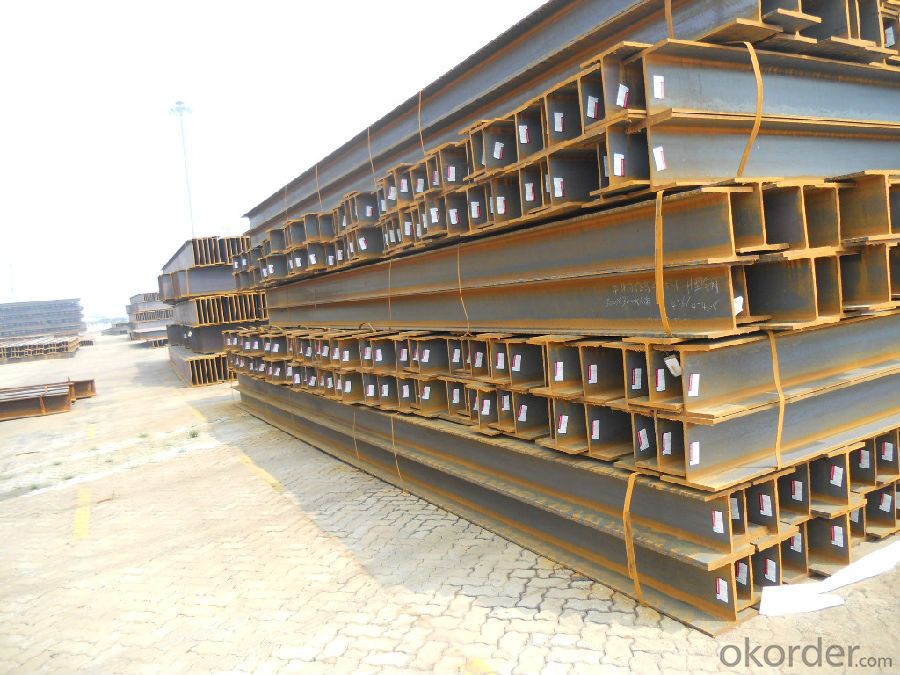
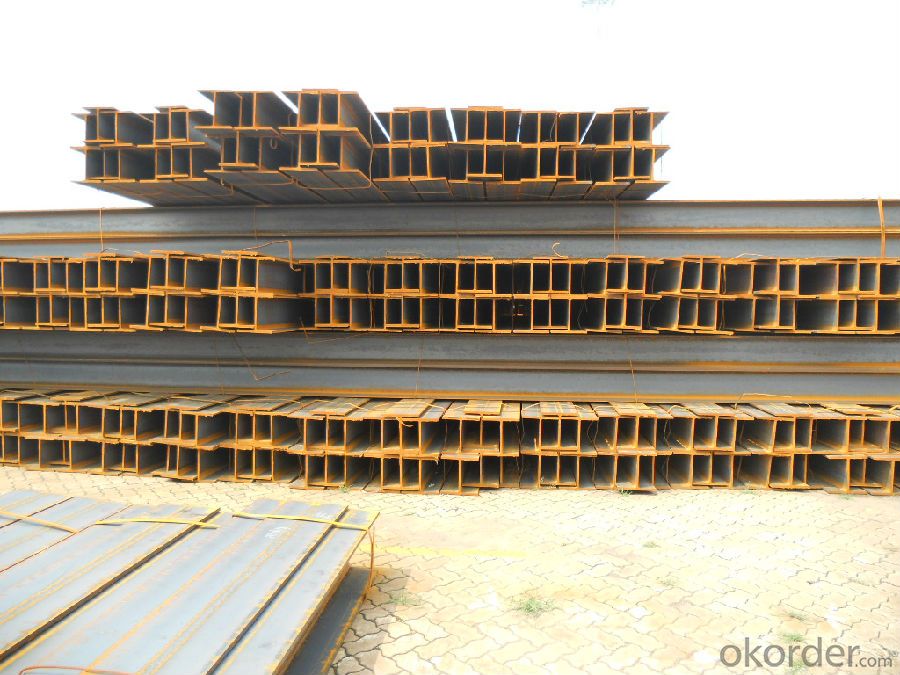
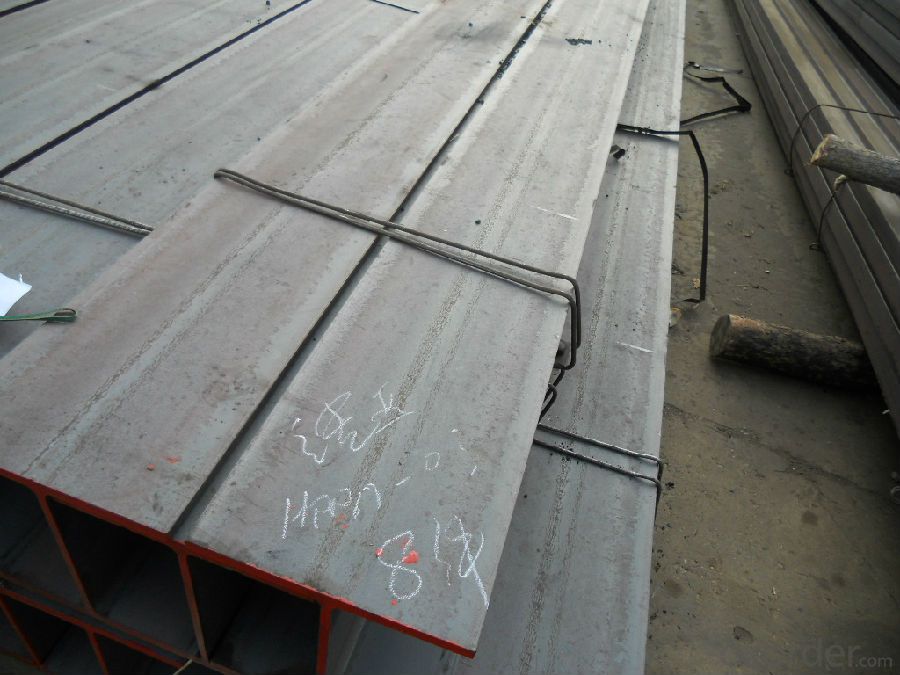
- Q: Can steel H-beams be used for supporting conveyor systems?
- Yes, steel H-beams can be used for supporting conveyor systems. The structural properties of steel H-beams, such as their strength and load-bearing capacity, make them an ideal choice for providing stable and durable support for conveyor systems.
- Q: Are Steel H-Beams suitable for seismic retrofitting or strengthening of existing structures?
- Seismic retrofitting or strengthening of existing structures is indeed suitable for Steel H-Beams. Their exceptional strength-to-weight ratio is well-known, making them an optimal choice for enhancing the structural integrity of buildings in seismic zones. H-Beams offer remarkable load-bearing capacity and resilience against lateral forces, which are crucial factors in seismic events. They can effectively reinforce existing columns, beams, and other structural members, enabling them to withstand the additional forces generated during earthquakes. Moreover, the installation and integration of Steel H-Beams into existing structures are effortless, resulting in minimal disruption during retrofitting projects. All in all, the utilization of Steel H-Beams in seismic retrofitting is a proven and efficient method to enhance the overall safety and durability of buildings situated in earthquake-prone areas.
- Q: What are the different types of steel H-beams available?
- There exists a variety of steel H-beams, each possessing distinctive characteristics and applications. 1. Standard H-beams, widely used and versatile, come in various sizes and dimensions. They find application in the construction industry, providing structural support for buildings and bridges. 2. Wide flange beams, also known as W-beams, possess broader flanges compared to standard H-beams. This design enhances stability and support, rendering them suitable for heavy-duty applications like high-rise buildings, industrial structures, and platforms. 3. I-beams, while not technically H-beams, share a similar shape and are often grouped together. I-beams have a narrower profile, with a flange on one side and a web on the other. They are frequently employed in steel construction projects, including beams, columns, and joists. 4. Tapered H-beams feature a tapered shape, with diminishing flange and web thickness from top to bottom. They serve applications where weight reduction is crucial, such as aerospace industries or specific architectural designs. 5. Light H-beams are characterized by their lightweight design and find primary use in weight-sensitive applications like the automotive industry or lightweight structures. They offer a high strength-to-weight ratio and are available in various sizes. 6. Stainless steel H-beams are crafted from stainless steel, providing superior corrosion resistance and durability. They are commonly used in environments prone to moisture or chemical exposure, such as coastal areas or chemical processing plants. It is worth noting that the availability of these steel H-beam types may vary depending on the supplier or manufacturer. Therefore, it is advisable to consult a steel supplier or structural engineer to determine the most suitable H-beam type for your specific application.
- Q: Can Steel H-Beams be used in foundation or basement construction?
- Indeed, foundation or basement construction can incorporate steel H-beams. These beams are widely utilized in construction due to their robustness, longevity, and adaptability. They have the capability to establish a secure and firm base for buildings, including basements. Typically, steel H-beams are utilized in conjunction with other materials, such as concrete, to establish a sturdy foundation or basement structure. The H-shape of these beams allows for improved load distribution and heightened structural stability, rendering them an optimal choice for these construction endeavors. Furthermore, steel H-beams possess resistance against weathering, corrosion, and pests, thus further enhancing their suitability for foundation and basement construction.
- Q: What are the different types of steel H-beam connections used in residential buildings?
- Residential buildings commonly utilize various types of steel H-beam connections to ensure stability and strength for the overall structure. Here are some examples: 1. Welded Connection: The most frequently used connection method in residential buildings involves directly welding the H-beam to the supporting structure, such as columns or beams. This technique employs high-strength welding techniques to provide excellent strength and rigidity, making it suitable for applications with heavy loads or high lateral forces. 2. Bolted Connection: Another option is to use high-strength bolts to connect the H-beam to the supporting structure. This method offers easy installation and allows for convenient disassembly or modification when necessary. Bolted connections are commonly employed in situations that require adjustability or removability of the H-beam, such as mezzanine floors or temporary structures. 3. Shear Plate Connection: This type of connection involves placing steel plates on both sides of the H-beam, which are then bolted together. By distributing the load from the beam to the supporting structure, shear plate connections provide excellent strength and stability. They are commonly utilized when the H-beam needs to withstand heavy loads or moments. 4. Clip Angle Connection: Clip angle connections utilize steel angles that are welded to both the H-beam and the supporting structure. These angles provide additional support and rigidity to the connection. Clip angle connections are often employed in situations where the H-beam needs to resist lateral loads or uplift forces. 5. Moment Connection: Moment connections are specifically designed to resist rotational forces or moments. These connections combine welding and bolting techniques to ensure a rigid and strong connection between the H-beam and the supporting structure. Moment connections are frequently used to support large cantilevered structures or heavy loads. It is worth noting that the selection of a specific type of steel H-beam connection for a residential building depends on various factors, including load requirements, architectural design, and recommendations from structural engineers.
- Q: Are steel H-beams suitable for use in earthquake-prone areas?
- Steel H-beams are commonly used in construction due to their strength and durability. However, when it comes to earthquake-prone areas, their suitability depends on various factors. Firstly, steel H-beams have excellent resistance to tension and compression forces, making them generally suitable for seismic conditions. They are designed to distribute the load evenly, which can help reduce the impact of earthquakes. Additionally, steel is a flexible material, allowing it to absorb and dissipate energy during seismic events. However, the suitability of steel H-beams in earthquake-prone areas also depends on the specific design and construction techniques employed. Proper engineering practices, such as incorporating seismic design principles and ensuring adequate connections, are crucial to enhance their performance during earthquakes. In earthquake-prone areas, building codes and regulations often require adherence to specific seismic design criteria. These codes ensure that structures are built to withstand the anticipated ground motions and minimize the risk of structural failure during seismic events. It is essential to consult with experienced structural engineers who have expertise in designing for seismic forces to ensure the appropriate use of steel H-beams. Furthermore, the local geological conditions and the intensity of potential earthquakes in the area must be taken into account. The ground motion characteristics, including frequency content, amplitude, and duration, should be considered in the design process. This information helps engineers determine the appropriate size, shape, and spacing of steel H-beams to withstand the anticipated seismic forces. In summary, steel H-beams can be suitable for use in earthquake-prone areas if they are designed and constructed following proper engineering practices and local building codes. Consulting with experienced professionals and considering the local geological conditions and seismic design criteria are crucial steps in ensuring the safe and effective use of steel H-beams in such areas.
- Q: What are the potential drawbacks or limitations of using steel H-beams?
- Some potential drawbacks or limitations of using steel H-beams include their weight, cost, and susceptibility to corrosion. Steel H-beams can be quite heavy, which can increase the complexity and cost of transportation and installation. Additionally, the cost of steel can fluctuate, making it a less predictable material choice compared to other alternatives. Furthermore, steel H-beams are vulnerable to corrosion if not properly protected, which could reduce their lifespan and structural integrity over time.
- Q: Can steel H-beams be used in the construction of parking structures or garages?
- Yes, steel H-beams can definitely be used in the construction of parking structures or garages. H-beams are widely used in the construction industry for their strength, durability, and load-bearing capacity. They are capable of withstanding heavy loads and are suitable for constructing multi-story parking structures or garages. Additionally, steel H-beams offer various advantages such as their lightweight nature, which simplifies the construction process and reduces costs. They also provide flexibility in design, allowing for greater creativity in architectural layouts. Overall, steel H-beams are a popular choice for parking structure or garage construction due to their structural integrity and versatility.
- Q: Can steel H-beams be used for commercial parking structures?
- Yes, steel H-beams can be used for commercial parking structures. Steel H-beams are commonly used in construction due to their high strength and durability. They provide excellent support and can withstand heavy loads, making them ideal for parking structures that are designed to accommodate numerous vehicles. Steel H-beams also offer flexibility in design, allowing for efficient use of space and the ability to create multi-level parking structures. Additionally, steel is a sustainable and recyclable material, making it an environmentally friendly choice for commercial parking structures. Overall, steel H-beams are a reliable and cost-effective option for constructing sturdy and long-lasting parking structures in commercial settings.
- Q: Can steel H-beams be used for supporting solar panels?
- Yes, steel H-beams can be used for supporting solar panels. Steel H-beams are commonly used as structural supports in construction due to their strength, durability, and load-bearing capabilities. When it comes to solar panel installations, H-beams provide a sturdy framework to securely hold and support the panels in place. The inherent strength of steel ensures that the beams can bear the weight of the panels, even in adverse weather conditions. Furthermore, the versatility of steel allows for customization and adaptability to various installation requirements. Whether it is a rooftop installation or a ground-mounted solar array, steel H-beams can effectively serve as the primary support structure for solar panels.
Send your message to us
Hot Rolled Steel H-Beam for Equipment Structure
- Loading Port:
- Tianjin
- Payment Terms:
- TT OR LC
- Min Order Qty:
- 10000 m.t.
- Supply Capability:
- 150000 m.t./month
OKorder Service Pledge
OKorder Financial Service
Similar products
Hot products
Hot Searches
Related keywords
